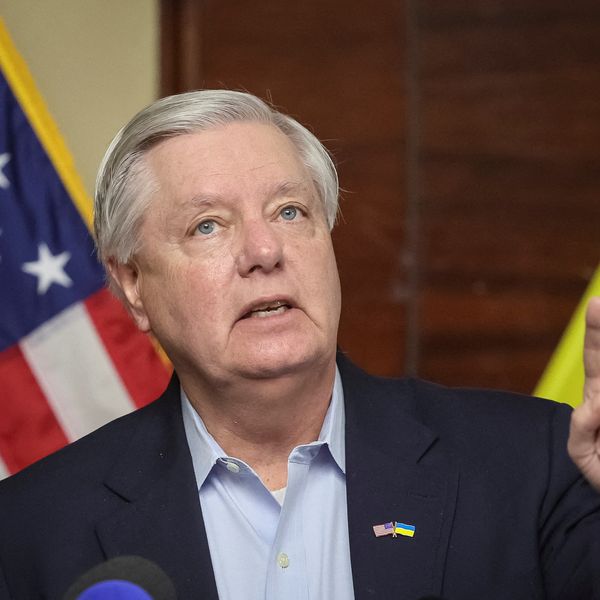This week U.S. Secretary of State Mike Pompeo and Secretary of Defense Mark Esper traveled to New Delhi for the third U.S.-India 2+2 Ministerial Dialogue with one message: we need YOU to help us confront China.
After signing the U.S.-India Basic Exchange and Cooperation Agreement (BECA) to share geospatial intelligence, Pompeo then continued on to other destinations in South and Southeast Asia carrying the same strident banner.
The underlying U.S. message was clear: Washington desperately needs partners in an American-led fight against Chinese influence in Asia. The United States has long viewed South Asia through a one-dimensional lens as a hedge against a perceived threat — first the Soviet Union, and later the Taliban and al-Qaeda. After two decades of failure in Afghanistan, Washington is once again revamping its strategy in South Asia and neighboring Southeast Asia, but with the same failed approach that reduces the region to a mere hedge, this time against Beijing.
Throughout the second half of the 20th century, Washington viewed South Asia as a potential battleground against the Soviet Union wherein Pakistan served as a hedge while India leaned closer to Moscow. In 1954, the United States and Pakistan signed the Mutual Defense Assistance Agreement and, one year later, Pakistan joined the South East Asia Treaty Organization and Central Treaty Organization. Islamabad also helped jumpstart President Nixon’s detente with Beijing as China’s relations with the Soviet Union became increasingly acrimonious.
However, Washington did not develop genuine alliances in South Asia — only short-term interests. In 1964, Foreign Affairs published an article by Pakistan’s military-installed president, Ayub Khan, in which he complained that, while Pakistan was a loyal ally to Washington, India’s policy of non-alignment, which he described as "playing both sides of the street," was rewarded with increased U.S. aid to woo India away from the Soviet orbit.
In the waning years of the Cold War, the United States saw the Soviet invasion of Afghanistan in 1979 as an opportunity to bury Moscow once and for all in a self-dug grave. Washington’s subsequent support for the Afghan mujahideen contributed to the rise of the Taliban and al-Qaida. It also caused the United States to largely turn the other cheek as Pakistan developed its nascent nuclear-weapons program with China’s assistance.
After 9/11, the ghosts of Washington’s campaign against the Soviets in South and Central Asia were resurrected into a new all-encompassing threat — al-Qaida. Washington ramped up aid to Pakistan, rotated hundreds of thousands of troops through Afghanistan, and viewed a region of over one billion people through the kaleidoscope of an increasingly dysfunctional counterinsurgency campaign in Afghanistan.
As the war on terror has lost steam in recent years, Washington has shifted toward a more China-centric approach to South Asia, as epitomized by Pompeo’s trip. The Joint Statement of last week’s U.S.-India 2+2 Ministerial Dialogue commits to a “free, open, inclusive, peaceful, and prosperous Indo-Pacific built on a rules-based international order, underpinned by ASEAN centrality…” While these aspirational goals are positive, the wording is transparent in its suggestion that India should serve as the tip of the spear against Chinese influence, a suggestion made more explicit by Secretary of State Mike Pompeo’s press appearances during the trip.
When Indian media mogul Shekhar Gupta pressed Secretary Pompeo to comment on the U.S.-India relationship during an interview apart from the “China problem,” Pompeo responded, “...I’m confident that if China were to go away suddenly, that we all pray might happen, I’m confident the relationship would still stand.” Nonetheless, China remained the central focus throughout the interview, with no discussion of U.S.-India relations outside of the China context. Speaking later at a press conference in Sri Lanka, Pompeo described the Chinese Communust Party as a “predator” and the United States as a “friend” and “partner.”
Washington is mistaken in assuming that Prime Minister Narendra Modi’s strongman cult of personality can be manipulated into a bold and predictable alliance against China and that smaller nations in the region can be bullied into taking sides. Not only India, but also countries like Sri Lanka and the neighboring ASEAN nations — including Pompeo’s final stop, Indonesia — are unlikely to accept his imposed suzerainty.
Instead, they are more likely to maintain balance in their relations with the United States and China. Following Pompeo’s visit to Colombo, for example, Sri Lankan Prime Minister Gotabaya Rajapaksa tagged Pompeo in a rather pointed tweet. “#SriLanka,” he wrote, “will always maintain a neutral stand in foreign policy and will not get entangled in struggles between power blocs.” Nor was he alone. The former Indonesian ambassador in Washington recently argued that smaller Asian nations will not embrace the Trump administration’s stance on China both because Beijing’s foreign policy is perceived as less ideological and because these nations are inspired by China’s economic model. His prescription? Washington should focus on soft power.
There are a variety of ways Washington could build its soft power in South and Southeast Asia in a less exclusive, less zero-sum way. As Joanna Lewis has argued, the United States should incentivize American companies and financial institutions to work collaboratively with Chinese banks as part of Beijing’s Belt and Road Initiative to help promote a greener form of development. Washington could also direct more development aid to nations in the region, leveraging that aid as a constructive parallel to the BRI by focusing on investment in clean energy infrastructure. These efforts would also benefit Americans by helping to mitigate climate change, while providing more growth opportunities for U.S. companies and jobs in America’s clean energy sector.
Similarly, more collaborative efforts on maritime security could also build U.S. soft power. ASEAN nations have recently distanced themselves from Washington’s efforts to use their disputes with each other and with China over islands, reefs, and marine resources as a wedge issue in a bipolar great-power competition. Although ASEAN nations are concerned about China’s expansive claims in the South China Sea, Washington has little more credibility than Beijing when it comes to the law of the sea. Not only has America failed to ratify the United Nations Convention on the Law of the Sea (UNCLOS), but its interpretation of “freedom of navigation” is far more military-centric than that of most Asian nations, including India, Pakistan, and most ASEAN members.
To boost its soft power in the region, the U.S. Congress should ratify UNCLOS, while the executive branch should work with nations in the Indo-Pacific region to develop a shared set of compromise understandings about military activities at sea. Instead of conducting frequent freedom of navigation operations (FONOPs) targeting nations throughout the region, the United States should focus more on promoting collaborative maritime safety, security, and conservation efforts in the Indian and Pacific Oceans through inclusive institutions such as the ASEAN Regional Forum.
A U.S. approach to South and Southeast Asia that views these regions as merely a hedge against China will not stop China’s influence from spreading. It will only produce skewed calculations, rattle Pakistan at a time when its cooperation remains crucial, impede cooperation on climate change, and squander opportunities for economic growth and development.















